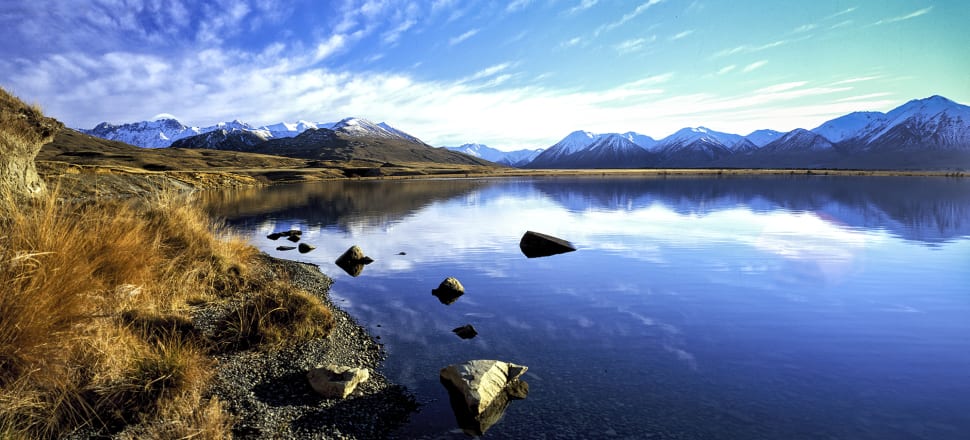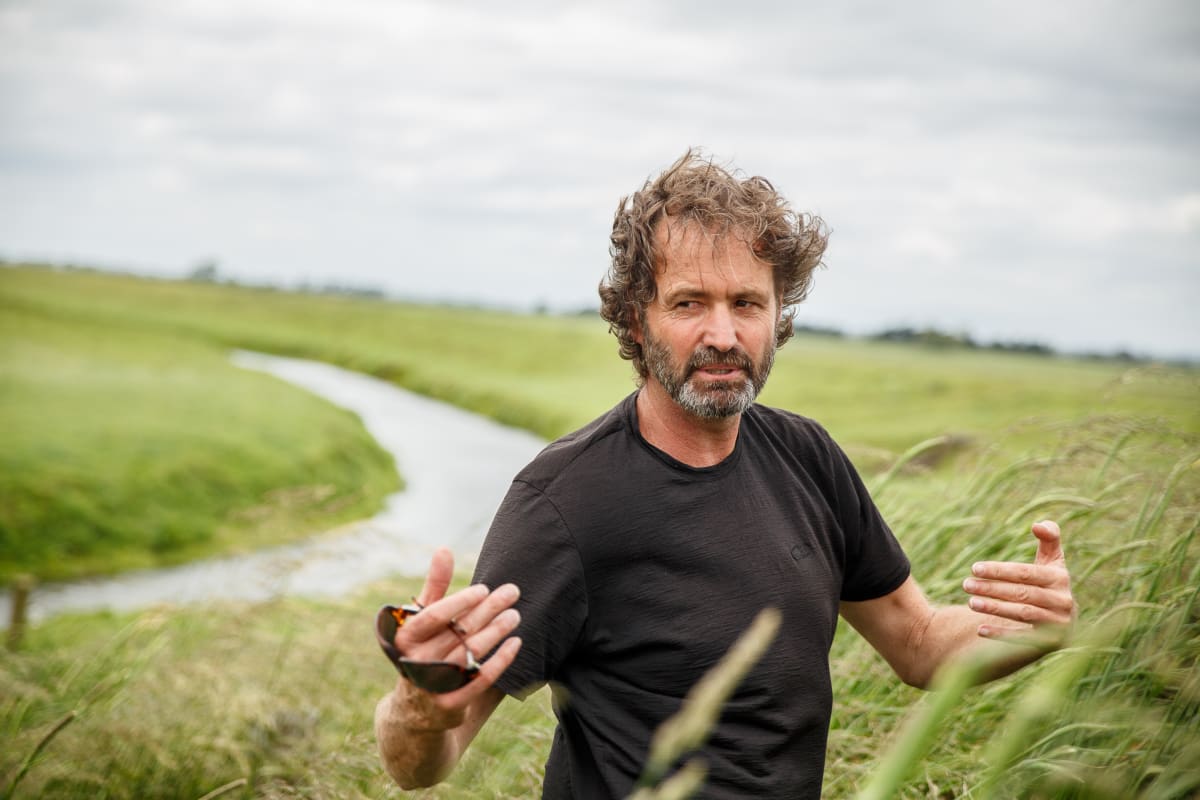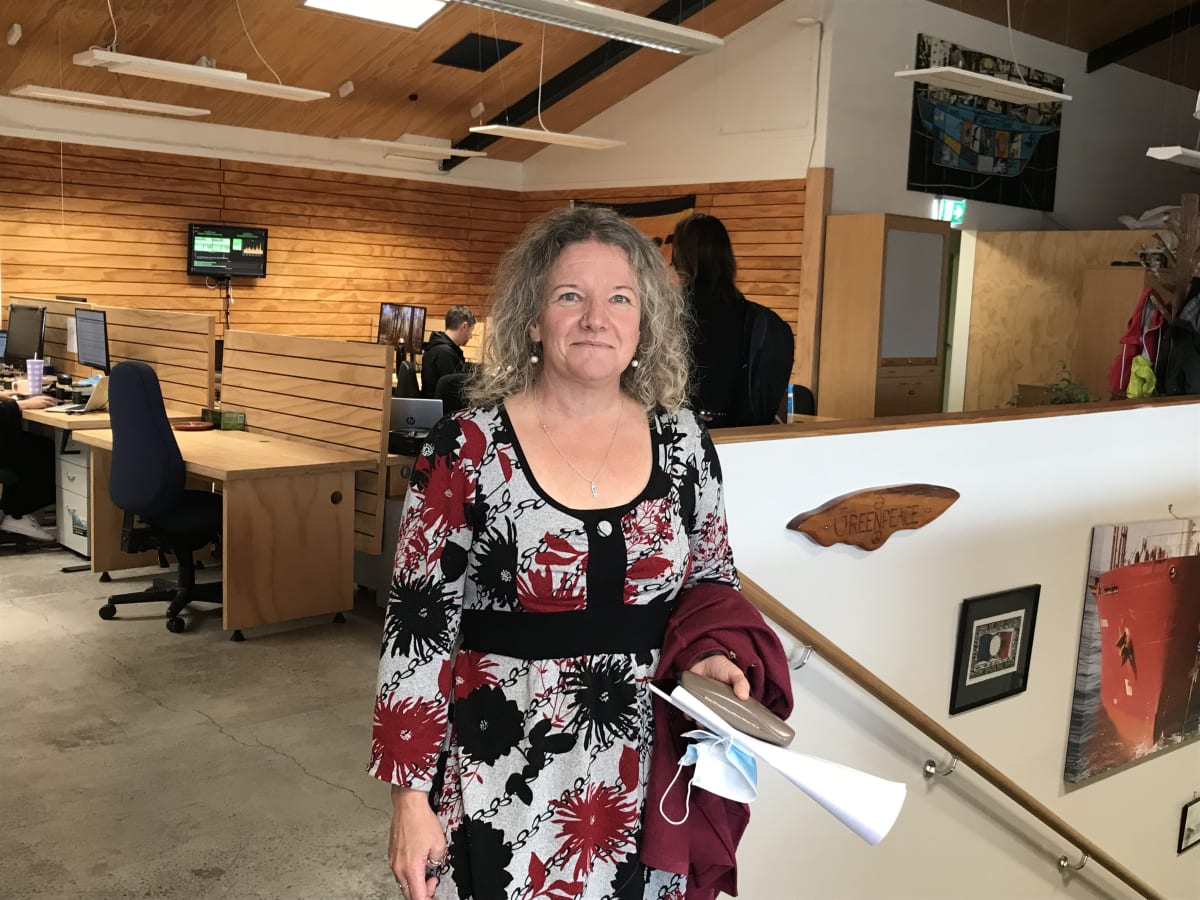
Supposed protections weren’t enough to stop sensitive lakes deteriorating, a Ministry for the Environment report says
A long-awaited government report lays bare the disconnect between the realities of intensive farming and the illusion of environmental progress.
The report, produced by the Ministry for the Environment and published on its website on Wednesday, dismantles the idea a cascade of plans, frameworks, national standards, and consents is leading to healthier water bodies.
Headlined ‘Lessons Learnt’, the report centres on the sensitive Ōtūwharekai/Ashburton Lakes – a network of wetlands and lakes in the Canterbury high country, the largest of which is Lake Heron.
READ MORE: * In a corner of Canterbury, poor protection starts to bite * Finally, water’s health is being put first
The report finds the freshwater management system, including audited and compliant environment plans for adjacent farms, fails to protect the lakes.
Too many nutrients from the surrounding land is the direct cause of decline in the lakes, which are generally shallow, and slow flushing. “Over 95 percent of [the nutrients] is due to leaching and run-off from land-use practices on the adjacent pastoral farms,” the report says.
Environment Minister David Parker, who ordered the report in 2021 out of concern for the lakes’ deterioration, met this week with Canterbury’s regional council, ECan, to discuss it.
“At the meeting, I expressed my view that appropriate input limits should be set in the next land and water plan
Parker expects ECan to act on the report. “It is for ECan to determine how it achieves the lower levels of nutrient pollution in the lakes.”
Environmental groups call the report damning, and evidence of systemic failure – a shot across the bow ahead of a national rollout of freshwater farm plans, similar to those used in Canterbury.
“It’s not an attack on the individual farmers,” says Forest & Bird’s freshwater advocate Tom Kay, “it just does not work.”
He says the ministry appears to acknowledge water bodies have environmental limits. “And in this catchment, they were crossed. I’d love to see them acknowledge that across the country.”
Greenpeace campaigner Christine Rose says the report is damning of the system the government is relying on to fix freshwater. “This is really just the tip of the iceberg.”
The system is broken, she says, and the report is evidence to suggest freshwater bodies across the country will become increasingly contaminated, and deteriorate further.
“We’ve been signalling that we can’t have confidence in a system that hands power to the industry, and this [report] makes it clear that we’re right.”

Freshwater ecologist Dr Mike Joy, of Victoria University of Wellington, a member of the science and technical advisory group established in 2018 to oversee evidence for the Government’s freshwater reforms, says: “It’s reinforced or substantiated everything that I’ve been saying about the failure to protect freshwater.”
The report may be a case study for the Ashburton Lakes, but the east coast of the South Island and Southland, and parts of the North Island, have similar problems with nutrient-driven eutrophication, he says.
Colin Hurst, a mixed arable farmer at Makikihi, South Canterbury, and Federated Farmers’ spokesperson for water quality, acknowledges “the role some farming practices” played in the deterioration of Ashburton Lakes’ water quality, calling it “serious and concerning”.
He points to a section in the report in which the ministry says it’s working to add safeguards to the national farm plan regime.
“Federated Farmers is confident local farms will play their role in the adoption and improvement of evolving farm management practices and approaches to environmental guardianship, catchment by catchment.”
Some of the history traversed by the MfE report is unique to Canterbury.
The region’s freshwater management was jolted in 2010 by an intervention of the John Key-led Government, which sacked regional councillors and installed appointed commissioners at ECan, giving them sweeping powers. It was widely seen as a water grab.
Ten years after a region-wide water plan was adopted, only two of more than 30 goals had been met.
At a national level, meanwhile, signals were confused.
On one hand, direction to fix water quality and quantity problems was handed to councils via national policy statements. (They were panned as too weak, by some.)
At the same time, the Government announced an economic goal of doubling agricultural exports by 2025.

ECan’s science director Dr Tim Davie says degradation of Ōtūwharekai arose from a combination of factors and decisions made at “different layers of the system”.
Contributors to water quality problems in Canterbury/Waitaha, and other parts of Aotearoa, include: “A legacy of historic decisions, weak national policy, and market forces that incentivised intensive farming have all contributed to the problem.”
He adds: “It’s clear there’s been too much pastoral intensification in parts of Ōtūwharekai and that the regulatory system, at both the national and regional level, was not strong enough to protect the lakes, nor deliver on mana whenua aspirations for freshwater.”
Despite that blunt assessment, Davie doesn’t think the report shakes the foundations of the farm plan regime.
ECan will share its “learnings” with the ministry, he says, as the farm plan regime is rolled out nationally over the next few years.
“The public of New Zealand can see from this report that what they've been led to believe is going to fix the problem is in no way going to do that.” – Mike Joy
The ministry report lands as freshwater management is increasingly being debated in court.
Earlier this week, the High Court heard a challenge to a 2021 decision by ECan to approve nitrogen discharges from the Ashburton Lyndhurst Irrigation scheme.
Deteriorating water quality prompted Ngāi Tahu to launch legal action against the Crown in 2020, with the aim of protecting South Island lakes and rivers.
Ōtūwharekai/Ashburton Lakes are of high cultural value for Ngāi Tahu.
Te Rūnanga o Arowhenua, Te Taumutu Rūnanga, and Te Ngāi Tūāhuriri Rūnanga called an urgent hui in 2019 after a scientific report warned of the potential of irreversible changes which might disrupt the water supply to Ashburton, an hour’s drive south of Christchurch.
Te Rūnanga o Arowhenua kaitiaki Karl Russell welcomed the Lessons Learnt report.
“While these are important lessons to support future decision making, it’s critical that the focus remains on developing actions to stop the decline of Ōtūwharekai.”
Decline coincided with rise in farming
Mana whenua have been calling for action to be taken at Ōtūwharekai for decades, Russell says. (Arowhenua’s marae is in Temuka, South Canterbury.)
“Our roto (lakes) have degraded, our mahika kai (food gathering) are less plentiful, and our taoka (treasured) native species have seriously declined.”
In scientific parlance, the lakes are now partly eutrophic, with elevated levels of sediment and nutrients, algal growth and reduced clarity.
The Lessons Learnt report says the decline coincided with an upsurge in pastoral farming from around 1990 to 2010. Cattle and deer numbers increased, as did fertiliser use, winter grazing and vegetation clearance of indigenous shrubs and tussock to pasture.
Action is being taken. Te Rūnanga o Arowhenua and the Department of Conservation, alongside others, began work on wetland restoration around the 12 lakes – eight of which are monitored – in 2007.
In 2012, ECan made specific mention of Ōtūwharekai in its proposed land and water plan.
But water quality continued to decline. (A working group was formed in 2019, which expanded in 2021.)
The scientific report in 2019 warned the nutrient enriched lakes were in danger of “flipping” into more severe eutrophic states.
Headlines in The Press newspaper said toxic algal blooms turned Te Puna-a-Taka/Lake Clearwater into a “pea brown soup”, and urgent action was need to stop the Ashburton Lakes “turning to sludge”.
There are four farm stations in the catchment – Mt Possession, Mt Arrowsmith, Castleridge, and Lake Heron. Farm plans on the first three achieved A-grade audits, while a recent regional council assessment of Lake Heron “indicates high likelihood of compliance”.
That presents a problem for ECan, which says it can’t impose further restrictions on the farms, as their audits comply with the land and water plan, and had passed audits.
This is the systemic failure Forest & Bird’s Kay talks about – “the inadequacies of the Resource Management Act and the plans that come from it”.
The Lessons Learnt report’s core findings highlighted “vulnerabilities” in the system which led to insufficient lake protection.
(As he read each line, freshwater ecologist Mike Joy whooped: “Hell yeah!”. “It’s restored my confidence in the Ministry for the Environment.”)
- Controlling nitrogen was done through measuring losses from run-off and leaching – outputs – rather than inputs, like stock numbers and fertiliser use. (“We’ve set targets,” says Kay, “but the targets don’t achieve outcomes.”)
- Nitrogen loss limits in the land and water plan were set too high, and weren’t linked to lake outcomes. Rather than “holding the line”, as planned, the baseline for average nitrogen losses were set at a historical high for livestock numbers.
- In the face of continuing lake deterioration, there were few options to change course.
- Individual parts of the system were looked at but not the whole. Agencies were fragmented.
- Limiting losses, even when combined with so-called good management practices, weren’t enough to adequately reduce nitrogen concentrations.
- The system was a tick-box exercise about process, rather than tying on-farm intensity to lake pollution – the outcome. (Perversely, Kay says, just because farm plans have an A audit score doesn’t mean farming is being done in a way that’s sensitive to the environment.)
- The regime was “implemented largely out of ECan’s sight”. Critical decisions were devolved to farmers and their advisors, risking industry capture. Those decisions “appear to be neither tightly constrained nor well-monitored”.
- The tool favoured for measuring nutrient losses, Overseer, had limitations.
- Land-use change and trends weren’t collected.
- ECan was hamstrung until existing consents expired.
Farming groups weigh in
Hurst, of Federated Farmers, says individual farms in the Ashburton Lakes have made significant investments over many years.
“Examples include: stock water reticulation, fencing of streams and wetlands and changing stock management practices.”
(Several farmers told the ministry report’s author tighter nutrient limits could threaten their viability.)
Much of this work was beyond what regulations required, he says, while noting farmers are complying with the land and water plan.
However, the report says the plan and regulations were inadequate to protect the lakes.
Seepage of human wastewater from holiday baches and waterfowl waste are also mentioned in the report as factors, Hurst points out.
But the ministry also states over 95 percent of nutrients come from leaching and run-off from farms.
Dr David Burger, sustainability general manager for industry group DairyNZ, says all Canterbury dairy farms have farm plans, although he didn’t think there were any dairy farms in Ōtūwharekai.
“DairyNZ believes farm environment plans are an important tool for improving water quality outcomes and reducing greenhouse gas emissions.”
Forest & Bird’s Kay retorts that industry bodies – which should be accountable for the delays and denialism that will eventually come back and bite their farmer-members – are pushing farm plans and good management practices, and the MfE report “is a perfect example of why that does not work”.
“We can only have so much farming in these catchments, and in some catchments we will have to look at whether to have any farming at all.”
Tim Davie, of ECan, says farmers in Ōtūwharekai care deeply for the environment and have made considerable efforts to improve water quality.
“They are working hard to reduce the nutrient input to the lakes through substantial farm system changes. We appreciate this action.”
The results have been mixed.
While there’s been a reduction in algal biomass in Te Puna-a-Taka/Lake Clearwater, and an increase in water clarity, other lakes, such as Lake Heron, are “still trending negatively”.
Two years ago, Davie said in a statement substantial and urgent action was needed to make positive improvements; to protect the precious lakes.
Work’s underway through the Ōtūwharekai Working Group, he says, including developing a lake-by-lake catchment-wide action plan for farms and lakes.
That sounds good in principle, but Canterbury has a recent track record of significant agricultural expansion, and not a great record of reining it in to reduce pollution.
In the same way the ministry report released this week asks questions about the ministry’s role in “regulatory stewardship and oversight”, a previous ECan report into the development of the Canterbury high country said protective planning and regulatory process of councils, including ECan’s, appeared to have failed.

Environmentalists are sceptical about progress.
Greenpeace’s Christine Rose doesn’t think councils will invest the necessary money to ensure farm plans are monitored robustly, and properly enforced.
What will fix freshwater quality is very strict and sinking lid limits on synthetic nitrogen fertiliser and stock numbers, she says.
Wording is one thing, says Forest & Bird’s Kay – interpretation and implementation by councils can be another. “What we’ve seen through time … is that the councils will default to the less regulatory approach because it’s easier to get past industry groups.”
Joy, the freshwater ecologist, says self-regulation or self-auditing isn’t going to fix our waterways.
“The public of New Zealand can see from this report that what they've been led to believe is going to fix the problem is in no way going to do that. And this is confirmed by continuing declines in water quality.”
Scott Simpson, the Coromandel MP, the National Party’s environment and water spokesperson, makes an election-year pitch: “National will set freshwater rules on a catchment basis that takes into account local land use, geography, water quality, and other factors that put environmental outcomes at risk.”
He adds: “The Government has talked a big game on freshwater but these results show it is not delivering.”
Parker and the ruling Labour Party might have some explaining to do leading up to October’s election.
In August 2018, the Environment Minister said: “This Government is committed to protecting and restoring our freshwater for future generations. We want to see a material improvement in water quality within five years.”
We asked his office yesterday if the Government had failed in that pledge. It ignored the question.
Parker’s initial answers were focused squarely on Ashburton Lakes, so we asked if there are national implications he’s following up with MfE?
His office responds: “The minister hasn’t addressed any national implications at this point, although he expects that other regional authorities will be keenly interested in the report and its lessons.”
Meanwhile, Karl Russell, of Te Rūnanga o Arowhenua, is focused on putting the lessons learnt into action.
Rūnanga are pleased agencies, councils, and landowners are committed to working together, he says, “to stop the decline and improve the water quality and ecology of Ōtūwharekai”.
“We know what it is like to be shut out of decisions affecting our whenua. We want landowners to be part of the conversation as we jointly work together to develop solutions to save our lakes.”







